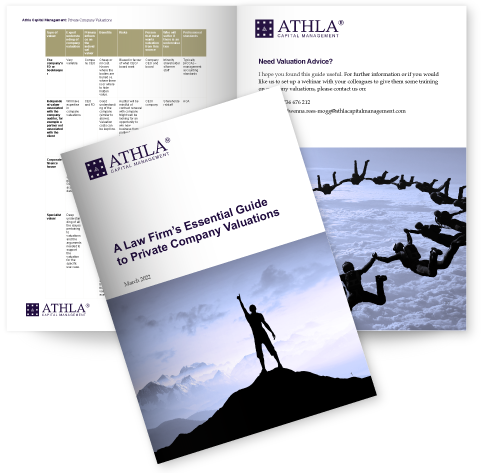An interesting case study
July 29, 2025

This valuation exercise was particularly challenging but therefore even more interesting.
Have you all been having a good summer? We are extremely busy here at Athla, not least because we have been building an exciting new piece of software to augment our due diligence platform. More news on that when it’s ready to showcase.
Over recent months increasing volumes of our valuation work includes complex situations and I thought I would share one example with you, as it is particularly interesting.
The case involved a family investment company with a voting share class with a very low number of shares and a non-voting share class with several million shares. The voting shares had no rights to income or distributions of capital, whilst the non-voting class had all rights to income and distributions of capital. Those of you involved with families will know that this structure is quite common these days.
What is each share class worth?
The simple part of the task was valuing the company. As an investment company we could rely on a net asset valuation. Job done.
Valuing the share classes was a different matter. On the first glance you might think that the voting shares are only worth their nominal value and that all the remaining value sits with the juicy voting shares. After all, they receive the income and capital, surely.
However, it’s not as simple as that. Voting control is valuable – just look at the big debates raging in the listed markets about share classes with super votes and the premium voting share classes tend to have over non-voting share classes, all other things being equal.
I spent the early 1990s enfranchising listed non-voting share classes so I know a bit about the issue!
(How times change that non-voting share classes are back in fashion in the listed markets).
In the case we were dealing with, the voting share class had the opportunity to do what it liked with the company’s assets; it could appoint as many paid or unpaid directors as it liked and could also employ as many people as it liked. (I forgot to tell you that the non-voting share class had no rights to information, so the earliest the shareholders could have found out what the voting share class had done would have been 10 months after the year end when the company’s accounts were filed at Companies House).
We addressed the challenge by identifying a surrogate for the responsible income stream that the recipients of the voting share class might reasonably be able to claim – by that I mean the value the holders of the share class could expect to extract for the services provided, which, in a court of law, would be seen to be reasonable. If you want to know the surrogate we used, please get in touch and I can tell you.
Having established this income stream, we were then able to forecast it into perpetuity and then discount it back to the present day. Voila, a net present value of the share class. We then applied a few other valuation principles (using case law related to control premia and other precedents) to get to an answer that everyone agreed with .
It was a most satisfying outcome.
One of the most interesting points was that once we had finished our work, the value of the share class was only a tiny bit higher than the nominal value. But what was important was that we had PROVED that this was the case, rather than just making a blanket claim.
If you need to establish the value of a company, share classes or even shareholdings for tax or for tax planning, we would be delighted to help.


